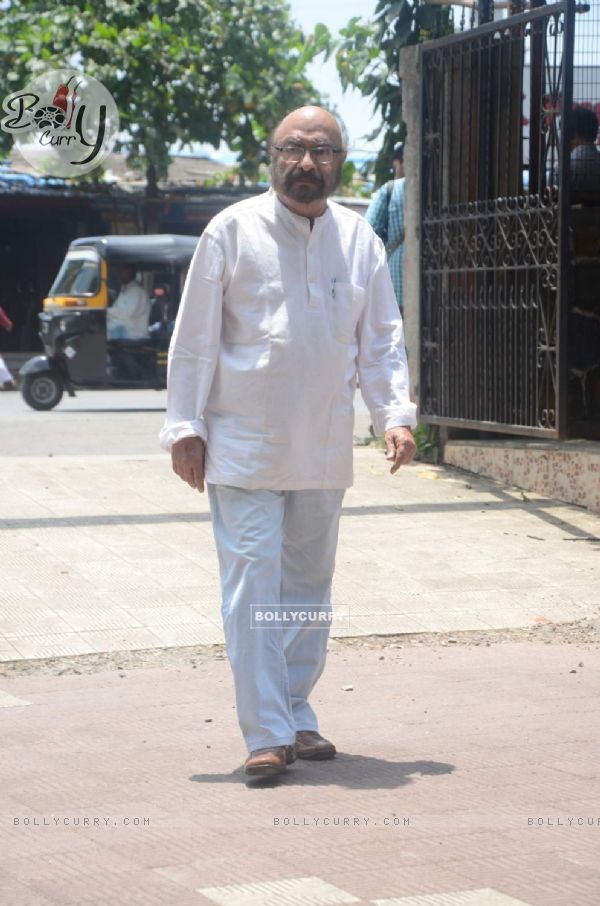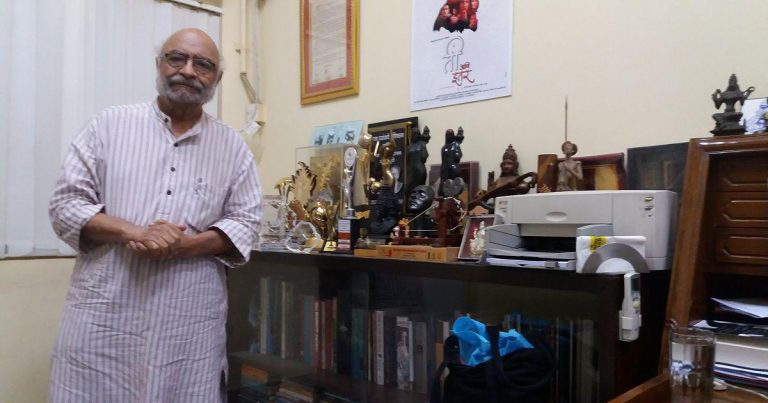
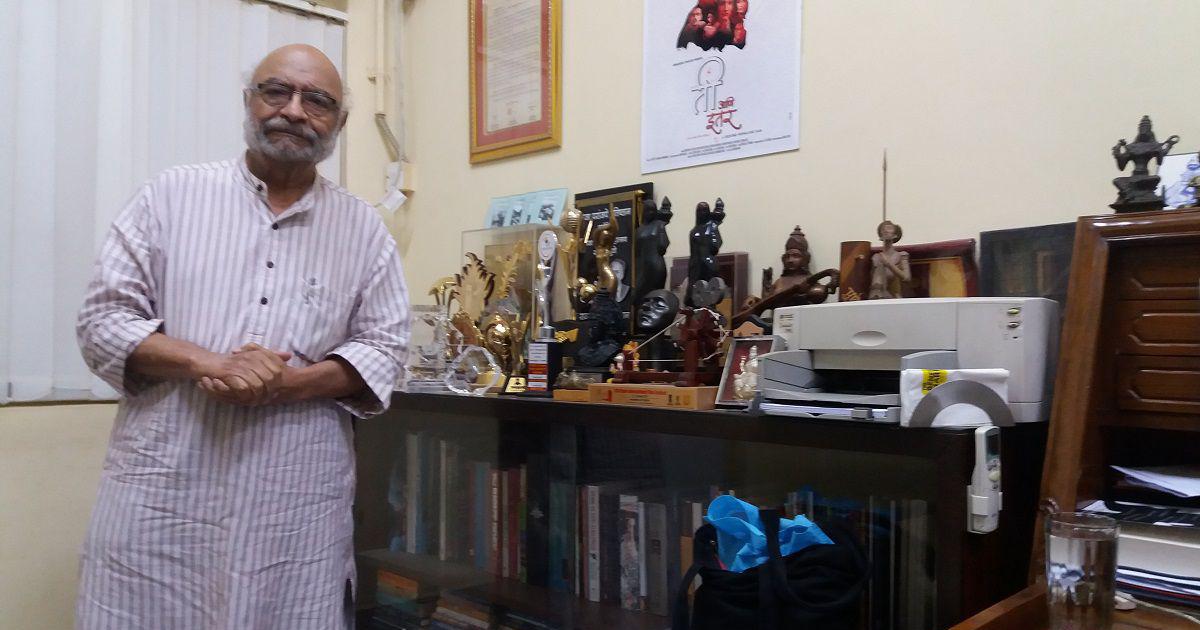 Govind Nihalani, an Indian film director, cinematographer, screenwriter and producer, known for his works in Hindi cinema, was born in Karachi on 19 December 1940, but his native town was Gambat town of Sindh where he used to visit along with his parents in childhood.
Govind Nihalani, an Indian film director, cinematographer, screenwriter and producer, known for his works in Hindi cinema, was born in Karachi on 19 December 1940, but his native town was Gambat town of Sindh where he used to visit along with his parents in childhood.
Govind Nihalani was only seven at the time of Partition, and even saw a man being stabbed in the back — as he stood on the terrace of his house — before moving to India. This visual influenced his memorable television series Tamas, which was based on writer Bhisham Sahni’s eponymous Partition novel.
The opening visual of Tamas, in fact, noted, “Those who forget history find themselves condemned to repeat it.”
As the Partition riots broke out, Nihalani and his family fled to Jodhpur, eventually settling in Udaipur. As an 18-year-old, Nihalani told his father he wanted to work in films, and, after an initial shock, he was allowed to pursue his dreams on advice from the family’s guru.
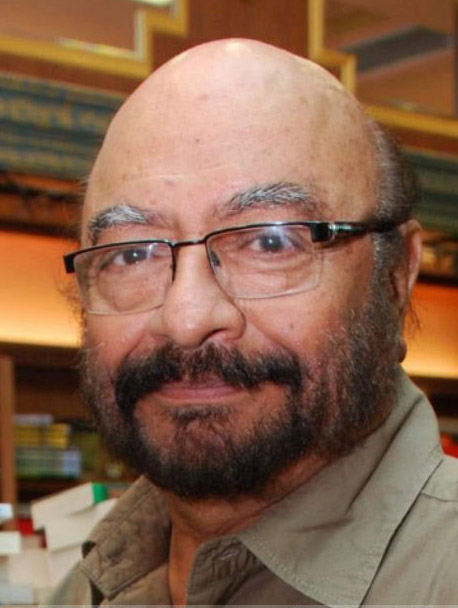 He then completed a three-year course in cinematography at Sri Jayachamarajendra Occupational Institute in what was then Bangalore. According to Nihalani, by the end of the program, thanks to the diverse courses, he “finished the course as a filmmaker”.
He then completed a three-year course in cinematography at Sri Jayachamarajendra Occupational Institute in what was then Bangalore. According to Nihalani, by the end of the program, thanks to the diverse courses, he “finished the course as a filmmaker”.
Nihalani came to Mumbai in 1962, but it was only in 1971 that he first worked with the legendary filmmaker Shyam Benegal, whom he referred to as his mentor.
Nihalani worked on ad films with Benegal, and then went on to be the cinematographer for eight of the latter’s movies, including Manthan, Nishant, Bhumika and Junoon. He said in an interview that he learnt the nuances of filmmaking from Benegal.
After branching off on his own with Aakrosh, Nihalani himself became an institution of parallel cinema.
The recipient of six National Film Awards, and five Bollywood Filmfare Awards, Govind Nihalani’s first directorial venture was Aakrosh, starring Om Puri, Naseeruddin Shah, Smita Patil and Amrish Puri. The film was scripted by noted Marathi playwright Vijay Tendulkar. The film shared the Golden Peacock for best film at the International Film Festival of India held in New Delhi in 1981. He then directed Ardh Satya, based on a story by S. D. Panwalkar. The film has received critical reception for depicting the police-politician-criminal nexus. In 1997, he adapted Bengali novelist Mahasweta Devi’s acclaimed novel by the same name to Hazaar Chaurasi Ki Maa.
Aakrosh and his following work earned Nihalani the image of a filmmaker who highlighted the dark and real depictions of human angst. But despite being a proponent of ‘art’ cinema, Nihalani also once said in an interview: “I am fully aware that if a film does not recover its cost it would be difficult for a director to make his next film.”
Nihalani’s last Hindi film as director was Dev, released in 2004. But his career isn’t over — Nihalani directed a Marathi movie called Ti Ani Itar released in 2019, and also had a 3D animation movie called Up Up and Up.
Nihalani once remarked about his cinematic style: “They wanted stars and chocolate heroes, we didn’t…they wanted songs and dance, we didn’t.”
In a discussion with documentary filmmaker Rakesh Sharma, he had even bemoaned: “Our 1970s movement was supported by government funds and the media. Now the media is totally seduced by glitz.”
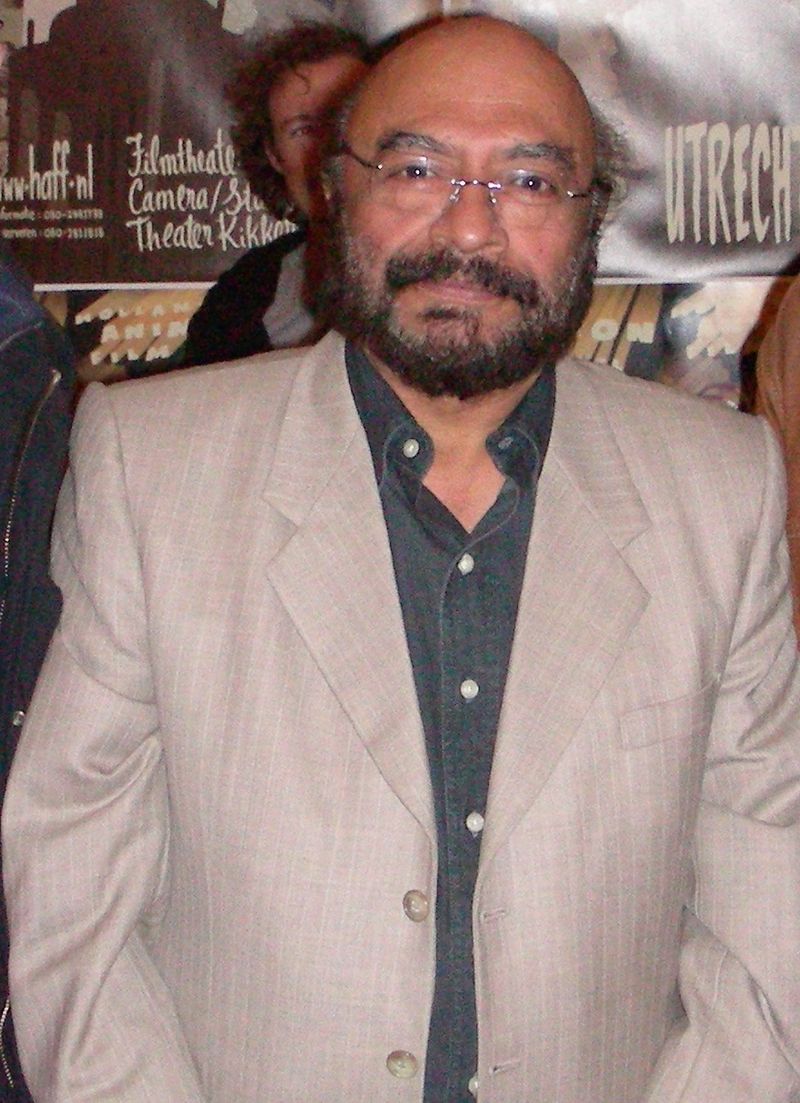 On how the parallel cinema movement could continue to grow, Nihalani said: “Go to spaces not controlled by the state; don’t look for state sponsorship.”
On how the parallel cinema movement could continue to grow, Nihalani said: “Go to spaces not controlled by the state; don’t look for state sponsorship.”
He called his last Hindi feature film, Dev, an extension of Ardh Satya. However, he had been angry about cuts ordered by censors in the film, saying: “The censors cleared Tamas without a single cut. In Dev, I was asked to delete words like Gujarat and Ayodhya. Shows how intolerance has grown.”
Watch the Video: Interview of Govind Nihalani
Family Background
In an interview Govind Nihalani said his interest in cinema dates back to his childhood. “I saw films and fell in love with them”.
“See, I come from a traditional Hindu family. My family, rather my father, was very religious. So, I used to be taken to films, which were only mythological. Children were supposed to be taken to only mythological films and not any other films. My first memory of cinema as I saw it was a film called Narsi Bhagat. It was a very famous film in the 40s. I still remember the thrill I felt when I saw a small boy feeding pigeons, and then I remember, the camera goes on to the pigeons. There is a dissolve to another set of pigeons. And as you track back, there was an elderly man, a grown up man feeding the pigeons. And I understood it was the boy who grew up. As a child suddenly I understood what had happened. The thrill of realizing what is happening in front of you, I remember that. That was the beginning of my getting the thrill from cinema. That thrill and pleasure continued. But as I told you since my father was very strict about these things, I saw very few films”.
He continued, “Then when I was near high school, I used to go to a cinema hall very near to my school. There I discovered the English films. I never bunked school to see films. I used to find time to go and see them. That is when the whole excitement started. Then of course Hindi films also.”
“I was exposed to the literature, Hindi literature. Geeta Press Gorakhpur used to bring out the Kalyan magazine. They used to carry pamphlets: “Cinema: Entertainment or the Means of Destruction”). Reading such literature, I became a great fan of cinema”.
“Then after high school, my father told me to take some vocational course. Because, you see, my family had migrated from Pakistan and had struggled for survival. My father was very keen that his children got some skill so that they can survive in life. So I was looking for a career in civil and radio engineering. I came across an advertisement, which said “cinematography”.
“Now this word did magic to me. It was a combination of cinema and photography. Photography I was already interested in. In art, I had joined drawing classes. One of my cousins was a still photographer, a professional. He had a shop. So I got very much interested in photography. The combination of cinema and photography in one word—cinematography—I felt like electric current passing through me. My father was very much against this. I discovered that that school was actually a very small kind of a school in Bombay whose address I could not trace. But the thing set in my mind that I got to do this. Then I started looking for institutes that offered these courses, and at that time, there was one institute in Bangalore and another was in Madras. I chose Bangalore and much against my father’s wishes, I joined that. Because one of the Guru’s of my family (he) looked at my horoscope and said he is bound to do something, which is connected with arts as well as machinery, so let him go.”
About the themes of his films, he said, “My films have always been related to some issue that I feel at that time (when I made the choice of the story somewhere I feel) that that issue is relevant to us. To find an answer to the issue is relevant to us. My films may not give you all the answers. But the fact is my films take a stand. They say this is the problem and as far as I think as a director this is the way out, a possible way out.”
Nihalani didn’t marry. Was the workaholic director so tied up with filmmaking that he didn’t consider marrying? “I have been involved with my work,” Nihalani said. “But I have not been uninvolved with life. It’s just that some things are not destined to happen. I have lived a fulfilling life and have no regrets.”
When asked for his advice for aspiring filmmakers, he said “I don’t wish to sound preachy. All I can say is that there’s a way for everybody. The people unable to find a way in the film industry have to struggle for it.
Nihalani said, “One should never look for short cuts. The difficult way is often the best way.”
‘Encyclopedia of Hindi Cinema’ by Govind Nihalani, Saibal Chatterjee and Gulzar – Popular Prakashan, 2003
Awards
Civilian honor Padma Shri (2002); National Film Awards: National Film Award for Best Cinematography – Junoon (1979); National Film Award for Best Feature Film in Hindi (director) – Aakrosh (1980); National Film Award for Best Feature Film in Hindi (director) – Ardh Satya (1983); National Film Award for Best Feature Film in Hindi (director) – Drishti (1990); National Film Award for Best Feature Film in Hindi (director) – Hazaar Chaurasi Ki Maa (1998); Nargis Dutt Award for Best Feature Film on National Integration – Tamas (1988); Filmfare Awards: Filmfare Best Cinematographer Award- Junoon (1980); Filmfare Best Director Award – Aakrosh (1981); Filmfare Best Movie Award – Ardh Satya (1984); Filmfare Best Director Award – Ardh Satya (1984); Filmfare Critics Award for Best Movie – Dev (2004).
Filmography
Aakrosh (1980) – Om Puri, Naseeruddin Shah, Smita Patil, Amrish Puri
Vijeta (1982) – Kunal Kapoor, Supriya Pathak, Shashi Kapoor, Rekha, Amrish Puri, Raja Bundela
Ardh Satya (1983) – Om Puri, Naseeruddin Shah, Smita Patil, Sadashiv Amrapurkar, Amrish Puri, Shafi Inamdar
Party (1984) – Rohini Hattangadi, Manohar Singh, Vijaya Metha, Om Puri, Naseeruddin Shah
Aghaat (1985) – Om Puri, Gopi, Naseeruddin Shah, Pankaj Kapoor
Tamas (1987) – TV serial based on a novel by Bhisham Sahni
Drishti (1990) – Shekar Kapoor, Dimple Kapadia, Irfan Khan
Pita (1991)
Rukmavati Ki Haveli (1991)
Jazeere (TV series) (1991)
Drohkaal (1994) – Om Puri, Naseeruddin Shah, Mita Vashishta, Annu Kapoor, Ashish Vidyarthi
Sanshodhan (1996)
Kuruthipunal (Tamil) (1996) Remake of Drohkaal
Hazaar Chaurasi Ki Maa (1997) – Jaya Bachchan, Anupam Kher, Joy Sengupta, Nandita Sen, Seema Biswas, Milind Gunaji
Thakshak (1999) – Ajay Devgan, Rahul Bose, Tabu, Amrish Puri, Govind Namdeo, Nethra Raghuraman
Deham (2001) – Joy Sengupta, Kitu Gidwani, Surekha Sikri, Aly Khan
Dev (2004) – Amitabh Bachchan, Fardeen Khan, Kareena Kapoor, Om Puri, Rati Agnihotri
Ti ani Itar (2017) – Subodh Bhave, Sonali Kulkarni, Amruta Subhash, Priya Marathe, Bhushan Pradhan, Suman Patel.
Up Up and Up – (3D Animated Feature Film) (2019)
____________________
